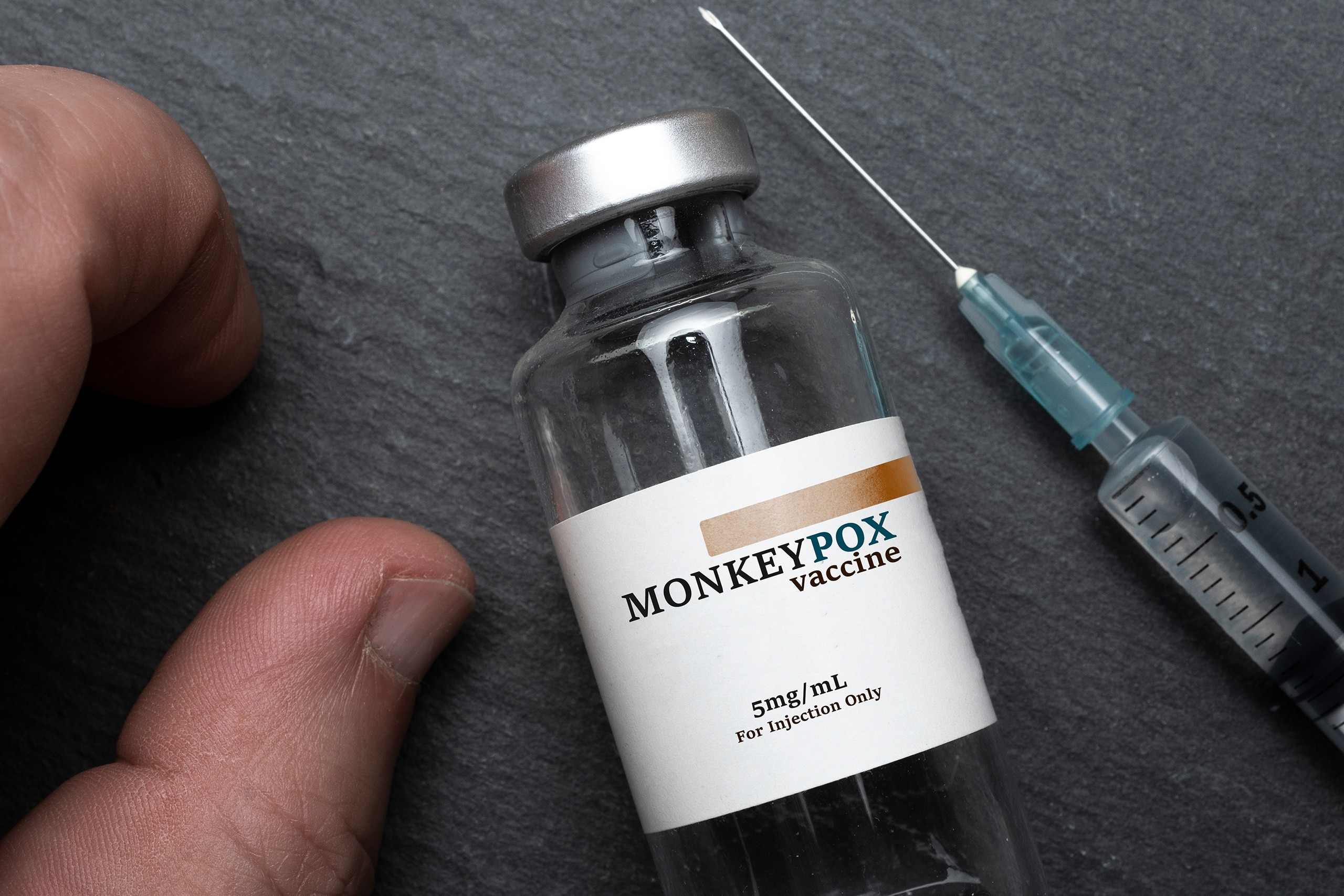Ask Our Experts
What you need to know about monkeypox

At Private Health Management, our team of PhD-led research experts continuously monitors the latest news, research, and developments for new insights to improve the health and safety of our clients. PHM has continued to track the monkeypox outbreak closely and this latest update supplements the FAQ published in late June.
What is the status of the monkeypox outbreak?
The World Health Organization Director-General declared the monkeypox outbreak a public health emergency of international concern on July 23, 2022. On August 4, 2022, the U.S. Department of Health and Human Services (HHS) announced a public health emergency (PHE). Declaring a PHE enables public health officials to take swift critical actions to help meet the demands of this outbreak. Multiple U.S. states and cities have declared the monkeypox outbreak as a state of emergency, including New York, Illinois, and California, aiming to enhance coordination among different government levels to combat the outbreak.
How many cases and deaths have been reported?
Cases: Monkeypox cases have increased significantly since our FAQ from late June. As of September 2nd, over 53,000 global cases have been reported across 100 countries (93 which have not historically reported monkeypox), compared to under 4,800 cases across nearly 50 countries at the end of June. In the U.S., nearly 20,000 cases have been reported across all 50 states, D.C., and Puerto Rico (compared to just over 300 cases in 27 states and D.C. in late June). While the disease continues to spread, new monkeypox cases have recently begun to fall in many areas of the U.S. and the world. Although this is a promising sign, it is too early to predict the future direction of the outbreak.
Deaths: There have been 15 monkeypox deaths across the world in this calendar year (6 deaths in locations that have not historically reported monkeypox). No deaths have been reported in the U.S. as of September 2nd.
How has monkeypox been spreading during the outbreak?
The monkeypox outbreak is currently concentrated in sexual networks among men who have sex with men (MSM). Based on the WHO global trends report as of September 5th, case profiles are as follows:
- 98.2% (26,953/27,449) of cases with available data are male, the median age is 36 years.
- U.S. case demographic data also indicates that the outbreak is concentrated in adult males. As of the latest data, over 97% of U.S. cases were among males, and only 0.2% of cases were in ages under 16 years old.
- 95.2% (11,923/12,530) of cases with known data on sexual orientation identified as MSM.
- 91.0% (7,824/8,601) of transmission events was attributed to a sexual encounter.
- 60.0% (2,921/4,867) of exposure events were in party/large event settings with sexual contact. Only 1.2% (57/4,867) of transmission settings were linked to the workplace.
What is the risk of transmission in a public setting?
The risk of transmission in public (e.g., at the grocery store, on a plane, etc.) is very low based on current data. The primary mode of transmission during this outbreak has been through direct physical contact (e.g., prolonged skin-to-skin contact with lesions/sores) afflicting certain at-risk populations. Based on contact tracing data, there is little evidence to indicate that incidental contact in public is a common mode of transmission, as you need to be exposed to enough virus to infect you. Prolonged exposure from sharing contaminated bedding or towels in the home would pose a much higher transmission risk than brief contact with an object such as a doorknob in public.
Transmission via contact with contaminated material has been rarely reported during the outbreak, representing only 12 of 8,601 (0.1%) of transmission events.
Who should consider vaccination?
The CDC currently recommends vaccination for people who have been exposed to monkeypox and people who may be more likely to get monkeypox in these high risk categories:
- People who have been identified by public health officials as a contact of someone with monkeypox
- People who learned that one of their sex partners in the past 2 weeks has been diagnosed with monkeypox
- MSM or transgender or gender-diverse people who have sex with men, and in the past 2 weeks had:
- Sex with multiple partners or group sex
- Sex at a commercial sex venue (like a sex club or bathhouse)
- Sex at an event, venue, or in an area where monkeypox transmission is occurring
- People whose jobs may expose them to orthopoxviruses
Note that vaccine eligibility varies by state and local jurisdiction in the U.S. – at this time, some areas only offer vaccination to confirmed contacts (not presumed contacts or high-risk individuals), despite the CDC recommendations.
Vaccine eligibility recently expanded to younger age groups. Specifically, the U.S. Food and Drug Administration (FDA) issued an emergency use authorization (EUA) for the JYNNEOS vaccine on August 9th to allow for use of the vaccine in individuals younger than 18 years of age determined to be at high risk of monkeypox infection. At this time, PHM recommends that only individuals who are at high risk of getting monkeypox, as defined by the CDC above, should get the vaccine.
Are vaccines available?
The JYNNEOS vaccine is preferred over the ACAM2000 vaccine, given JYNNEOS has a lower risk of side effects. JYNNEOS vaccine access has been limited due to supply constraints and fragmented distribution in the U.S. However, JYNNEOS vaccine availability in the U.S. is expected to continue to improve given the public health emergency declarations of monkeypox, increasing procurement of the vaccine by the federal government, improving operations and manufacturing, and the recent authorization to increase the number of doses per vial*.
*The FDA recently issued an EUA for the JYNNEOS vaccine to allow intradermal injection for individuals 18 years of age and older who are determined to be at high risk for monkeypox infection. This method can potentially increase the number of doses per vial by up to five-fold, as a smaller dose is required for intradermal (within the skin) vs. subcutaneous (beneath the skin) injection. About 75% of jurisdictions have started administering intradermal vaccines as of late August. However, specific training is required to administer intradermal injections, which could present an obstacle to widespread adoption should broader vaccination programs be needed in the future.
Is there a test I can take to confirm I have monkeypox?
Though testing had been limited during the outbreak, U.S. testing capacity has increased from 6,000 tests per week at the beginning of the outbreak to up to 80,000 tests per week currently.
It’s important to note that early screening tests are not authorized in the U.S., as clinicians must swab lesions/sores to test for monkeypox based on CDC/FDA guidelines. The current rigid testing process may expand in the future as the CDC is exploring other testing approaches (e.g., tests using saliva, throat swabs, and/or blood).
Are treatments available?
The antiviral drug tecovirimat (or “TPOXX”) is a treatment for smallpox, and is not FDA approved for monkeypox. Though the U.S. held 1.7 million courses of TPOXX in the Strategic National Stockpile prior to the current outbreak, it has been administratively burdensome for providers to get treatment to patients through the required investigational drug protocol. CDC recently partnered with FDA to streamline some of the steps to enable providers to more easily obtain TPOXX for those in need.
Though the vast majority of cases do not require hospitalization and tend to self-resolve within 2-4 weeks, even mild to moderate monkeypox cases can result in extremely painful lesions/rashes. If you contract monkeypox, or even if you are just exposed to monkeypox, talk to your doctor to see whether TPOXX may be right for you, particularly if you’re at risk of developing severe illness such as having a weakened immune system. Accessing the treatment can take time; therefore, speaking with your doctor as soon as possible is advised to create a plan.
If I have been exposed to monkeypox, what do I do?
You should monitor for symptoms for a period of 21 days if you are a close contact*. Asymptomatic contacts can continue daily activities such as work and school; quarantine is not recommended.
Talk to your doctor about getting the vaccine after exposure to help prevent monkeypox disease (i.e., post-exposure prophylaxis).
*Based on CDC guidance, you are a close contact if, since the start of the infected individual’s monkeypox symptoms, you have:
- Had sex with them (including oral, anal, and vaginal sex)
- Hugged, cuddled, or kissed them
- Shared cups, utensils, towels, clothing, bedding, blankets, or other objects and materials with them
- Touched or came in contact with the rash on their body
If I contract monkeypox, what do I do?
If you are suspected or confirmed to have monkeypox, isolate away from people and animals until your lesions have crusted and the scabs have fallen off. A person with monkeypox remains infectious while they have symptoms, normally for 2 to 4 weeks.
Talk to your doctor about whether any of these treatments is right for you: Tecovirimat (TPOXX), Vaccinia Immune Globulin Intravenous (VIGIV), Cidofovir, or Brincidofovir.
You should also notify anyone you have been in contact with and ask them to monitor their symptoms for a period of 21 days.
PHM’s guidance is subject to change based on emerging data during this rapidly evolving outbreak.
